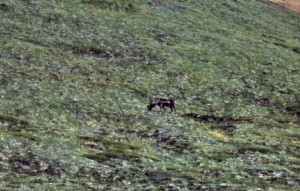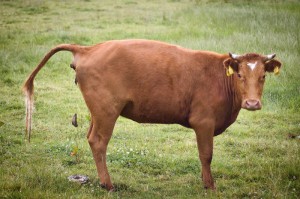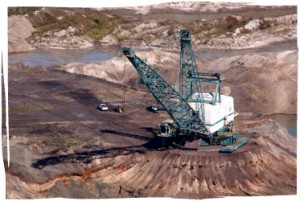It Takes How Much Water to Make A Pound of Beef?
California is running out of water and vegans point to the cow and say what His Royal Majesty, Prince Charles, says, “it takes 2000 gallons of water to make a pound of beef.” Others will say about 1700 gallons of water to make a pound of beef. For this reason, among others, HRM and P.E.T.A. state that we should abandon eating beef and make earth a vegan paradise. When you hear such figures, there are two reactions:
(a) Could this be right?
(b) Do they really account for recyling?
Quick answer- it takes no where near that to raise beef, and anyone who has been around a farm knows it. Some will say -“You didn’t account for the water that it took to raise the grain that is feeding the beef.” Well- they are just wrong, and their numbers are off – in fact, well- just read on…
But for those who like a plot- think this: it is more like 450 gallons of water- and most of it is recycled, it doesn’t just go away. But when you add nutrient value per gallon of water, beef wins hands down over the vegan paradise – and as you will see below, what vegans don’t account for is the destructive nature of their raising crops.
Calculating Water Use For Beef
To calculate the water it takes to grow a cow you need to see how much a cow drinks during its short life, how much water is used to clean the animal during production and after slaughter, and make a determination of how much water is used to grow the crops used to feed the cow. It is with the later, that there is a slight-of-hand measurement used.
Most cattle are these majestic creatures that weigh about 1100 pounds when they go to slaughter. The average cow yields about 568 pounds of retail beef cuts, but that does not mean the remainder of the cow goes to waste (well, some goes to waist as in a belt). The first slight of hand is that the half of the cow that is not used for meat is considered disposed of, so instead of taking all the water and dividing it by the weight of the cow- the figure is used for the whole cow to make the steak.
The Corny Statistic

It takes 350,000 gallons to produce an acre of corn, but most of that water (99.9%) ends up back in the atmosphere. Is it fair to count that amount of water in the calculations of what it takes to make a pound of beef?
The more egregious part of the statistic has to do with the feed for the cow. Most cattle feed lots use corn. It takes about 350,000 gallons of water to produce an acre of corn. Of course, more than 99.9 per cent of that water is either evaporated and goes back into the atmosphere. Of the water that enters the corn stalk, 99 percent of it still evaporates and is “transpired” back into the atmosphere.
But in calculating what a cow needs, instead of taking the actual water that comes from the corn to the cow, the common statistics include taking all the water for growing the corn and attributing it to that pound of beef.
Lets try the statistic another way. The average kernel of corn is 15.5% water, and the average steak-producing cow eats about 3800 lb of corn. That means the cow has taken in about 65 gallons of water from the corn it has consumed in its life. If you work the statistic out that way it takes about 9 gallons of water for that one pound of beef. If however, you take all the water to grow the corn, it takes about 410,400 gallons of water for one cow (or 722 gallons per pound of beef). The water used to grow corn doesn’t just end up in corn and magically disappear – the water used to grow corn is recycled back into earth.
Which statistic makes more sense to you?
Range Fed Beef – another statistic that is hard to choke down

Calculating the water it takes to make a pound of beef – the entire field, the water it takes to grow it, is often used to calculate the amount of water it takes to grow a pound of beef.
Here is more – most cattle grow up on ranges before being sent to a feed lot for finishing off with grain. If you take all the rain it takes to grow the hay, then you count that to the water it takes to grow the beef. Never mind that if the cows were not there to munch on the hay that it would grow wild.
By this logic, it takes the entire water of the north Pacific ocean to get the 250,000 millions of pounds of salmon sold every year which means it takes a lot of water for a pound of salmon.
Recycling and Environmental Niches
The great thing about biology is that there is a niche for every part of it. While a vegan would argue that we consume far too much water in making beef to feed us – they often ignore the obvious: what happens when a cow drinks water?
The water that a cow consumes typically does not stay in the beef. Even the nine gallons of water the cow consumes from all that grain does not stay in the cow. When you analyze the pound of beef there it is about 45% water – what happened to the rest of it?
What happens to a part of it is an essential component of the environment. Cows use water for biochemical reactions, for cooling their bodies, and when there is excess water the cow either urinates or defecates it. But in that urine and fecal matter the cow has other ingredients that are essential to the planet – they have also concentrated minerals, like phosphorus, which are needed for plants to grow. The rain that comes from heaven is not filled with chemicals (maybe some mercury) that help plants grow, so plants need those vital nutrients that are either pulled up from the soil, or recycled in a concentrated form.
Phosphorus is an important element of plant production, and the mining of inorganic phosphates is critical where there are not larger creatures recycling this back into the soil. If you don’t have these creatures (cows) then the plants need to have humans import inorganic phosphorus through strip mining, and that is far worse for the environment than raising a cow.

This is one choice you have to get phosphorus back into the environment

This is the other choice you have to get phosphorus (strip mine in Florida). This is the choice of the vegan lifestyle
